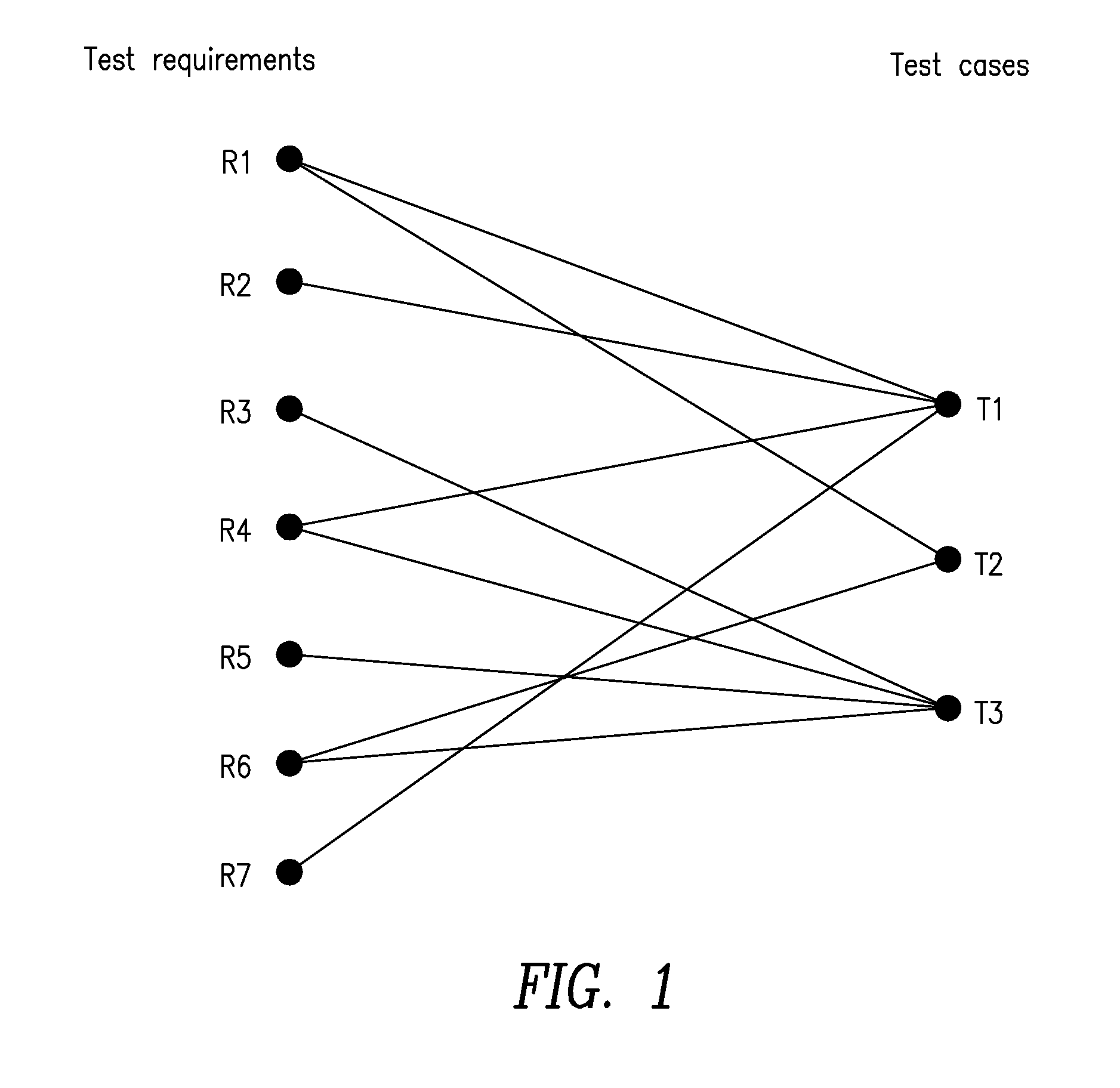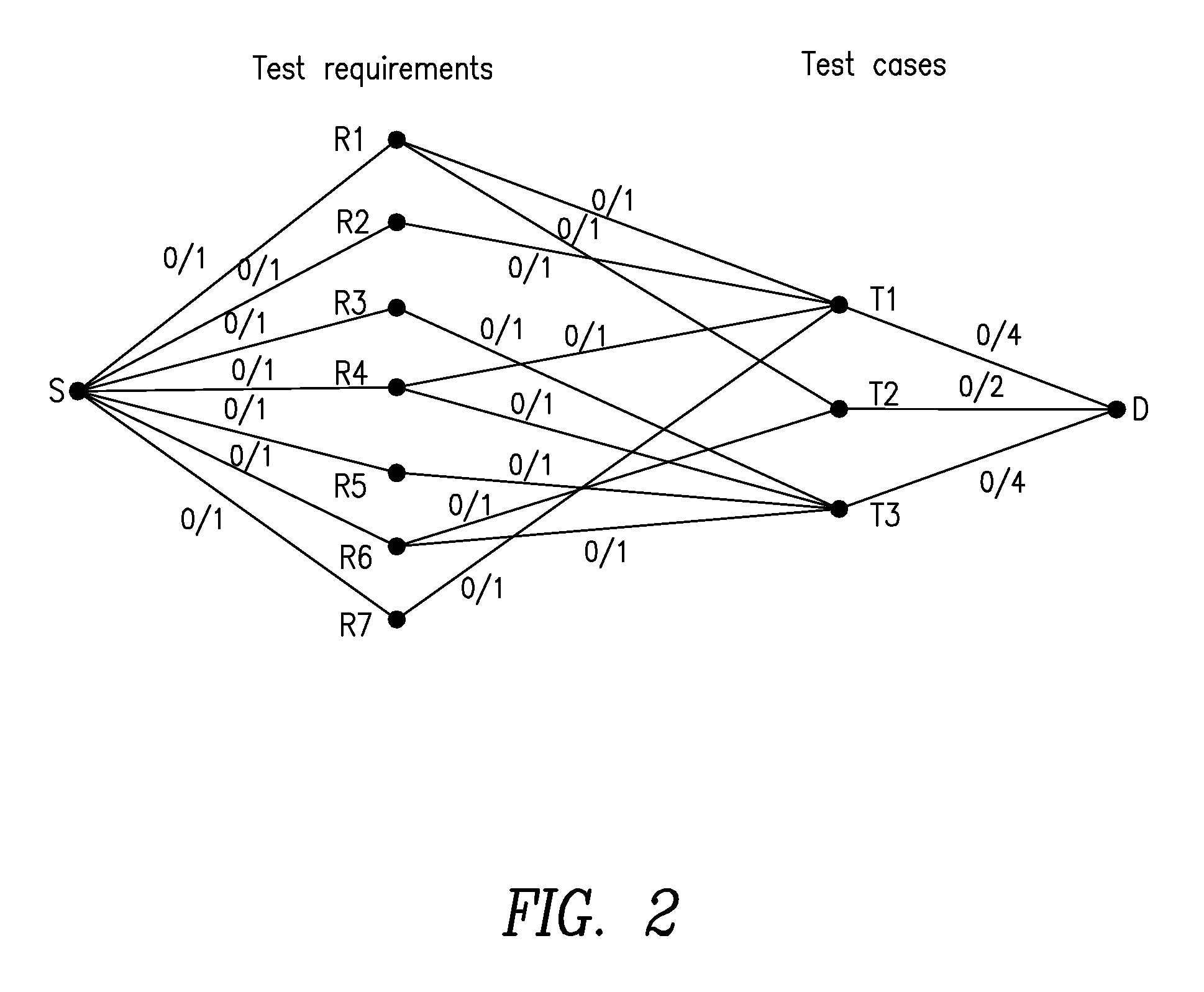Optimal test suite reduction as a network maximum flow
- Summary
- Abstract
- Description
- Claims
- Application Information
AI Technical Summary
Benefits of technology
Problems solved by technology
Method used
Image
Examples
Embodiment Construction
1. Background and Notations
1.1. Test Suite Reduction
[0036]Test suite reduction aims to decrease the overall number of test cases while retaining the coverage of the original test suite. A reduced test suite covering the same test requirements as the original suite, but not necessarily of the smallest possible size, is called a representative test suite. An optimal test suite reduction aims to determine the representative test suite consisting only of essential test cases, known as a minimum-cardinality subset. If any of the test cases from an optimal representative test suite were removed, the test suite would not satisfy all test requirements. RTS is used herein to refer to a Representative Test Suite and MCS is used herein to refer to a Minimum-Cardinality Subset, i.e., an optimal RTS. Note that an MCS is not necessarily unique for a given test suite reduction problem.
[0037]Formally, a test suite reduction problem is defined by an initial test suite T={T1, . . . , Tm}, a set of te...
PUM
 Login to View More
Login to View More Abstract
Description
Claims
Application Information
 Login to View More
Login to View More - R&D
- Intellectual Property
- Life Sciences
- Materials
- Tech Scout
- Unparalleled Data Quality
- Higher Quality Content
- 60% Fewer Hallucinations
Browse by: Latest US Patents, China's latest patents, Technical Efficacy Thesaurus, Application Domain, Technology Topic, Popular Technical Reports.
© 2025 PatSnap. All rights reserved.Legal|Privacy policy|Modern Slavery Act Transparency Statement|Sitemap|About US| Contact US: help@patsnap.com



